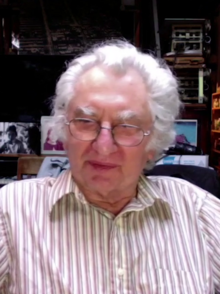
Phillip Earl Niblock was an American composer, filmmaker, and videographer. In 1985, he was appointed director of Experimental Intermedia, a foundation for avant-garde music based in New York with a parallel branch in Ghent, Belgium.
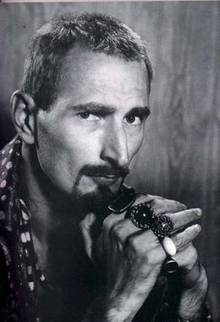
Jack Smith was an American filmmaker, actor, and pioneer of underground cinema. He is generally acclaimed as a founding father of American performance art, and has been critically recognized as a master photographer.

Shigeko Kubota was a Japanese video artist, sculptor and avant-garde performance artist, who mostly lived in New York City. She was one of the first artists to adopt the portable video camera Sony Portapak in 1970, likening it to a "new paintbrush." Kubota is known for constructing sculptural installations with a strong DIY aesthetic, which include sculptures with embedded monitors playing her original videos. She was a key member and influence on Fluxus, the international group of avant-garde artists centered on George Maciunas, having been involved with the group since witnessing John Cage perform in Tokyo in 1962 and subsequently moving to New York in 1964. She was closely associated with George Brecht, Jackson Mac Low, John Cage, Joe Jones, Nam June Paik, and Ay-O, among other members of Fluxus. Kubota was deemed "Vice Chairman" of the Fluxus Organization by Maciunas.
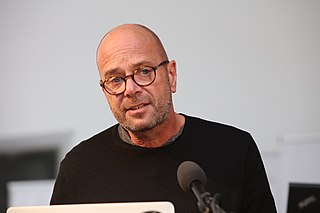
Martin Arnold is an experimental filmmaker known for his obsessive deconstruction of found footage.
Fred Worden, filmmaker, has been involved in experimental cinema since the 1970s. His work has been screened at The Museum of Modern Art, in the 2002 Whitney Biennial, The Centre Pompidou, in Paris, The Pacific Film Archive, The New York Film Festival, The London Film Festival, The Rotterdam International Film Festival, The Toronto Film Festival, and The Hong Kong International Film Festival. He was an editor for Criss-Cross Art Communications from the '70s through the '80s and his writings have appeared in Cinematograph. His work is included in the Stan Brakhage Collection, the Austrian Museum, The Centre Pompidou and others. Worden's work develops out of his interest in intermittent projection as the source of cinema's primordial powers: how a stream of still pictures passing through a projector at a speed meant to overwhelm the eyes might be harnessed to purposes other than representation or naturalism.

Steina Vasulka and Woody Vasulka are early pioneers of video art, and have been producing work since the early 1960s. The couple met in the early 1960s and moved to New York City in 1965, where they began showing video art at the Whitney Museum and founded The Kitchen in 1971. Steina and Woody both became Guggenheim fellows: Steina in 1976, and Woody in 1979.
Peggy Ahwesh is an American experimental filmmaker and video artist. She received her B.F.A. at Antioch College. A bricoleur who has created both narrative works and documentaries, some projects are scripted and others incorporate improvised performance. She makes use of sync sound, found footage, digital animation, and Pixelvision video. Her work is primarily an investigation of cultural identity and the role of the subject in various genres. Her interests include genre; women, sexuality and feminism; reenactment; and artists' books. Her works have been shown worldwide, including in San Francisco, New York, Barcelona, London, Toronto, Rotterdam, and Créteil, France. Starting in 1990, she has taught at Bard College as a Professor of Film and Electronic Arts. Her teaching interests include: experimental media, history of the non-fiction film, and women in film.

Dara Birnbaum is an American video and installation artist. Birnbaum entered the nascent field of video art in the mid-to-late 1970s challenging the gendered biases of the period and television’s ever-growing presence within the American household. Her oeuvre primarily addresses ideological and aesthetic features of mass media through the intersection of video art and television. She uses video to reconstruct television imagery using materials such as archetypal formats as quizzes, soap operas, and sports programmes. Her techniques involve the repetition of images and interruption of flow with text and music. She is also well known for forming part of the feminist art movement that emerged within video art in the mid-1970s. Birnbaum lives and works in New York.
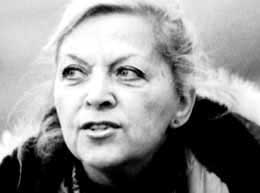
Storm de Hirsch (1912–2000) was an American poet and filmmaker. She was a key figure in the New York avant-garde film scene of the 1960s, and one of the founding members of the Film-Makers' Cooperative. Although often overlooked by historians, in recent years she has been recognized as a pioneer of underground cinema.
Marjorie Keller (1950–1994) was an experimental filmmaker, author, activist, film scholar. J. Hoberman called her "an unselfish champion of the avant-garde."
Takahiko Iimura was a Japanese avant-garde filmmaker and fine artist. He is considered one of the pioneers of experimental and independent filmmaking in Japan. Iimura was born in Tokyo and was a graduate of Keio University. His film Onan (1963) won the Special Prize at the Brussels International Independent Film Festival in 1964. He published a seminal work on experimental filmmaking in 1970, Geijutsu to higeijutsu no aida, and a biography of Yoko Ono, Ono Yōko hito to sakuhin, in 1985. Iimura made much of his film in New York City, but became a professor at the Nagoya Zokei University of Art & Design in 1992.
Skip Blumberg is an American filmmaker. He is one of the original camcorder-for-broadcast TV producers, and among the first wave of video artists in the 1970s. His early work reflects the era's emphasis on guerrilla tactics and medium-specific graphics, but his more recent work takes on more global issues. His work has screened widely on television and at museums. His video Pick Up Your Feet: The Double Dutch Show (1981) is considered a classic documentary video and was included in the Museum of Television and Radio's exhibition TV Critics' All-time Favorite Shows. His cultural documentaries and performance videos have been broadcast on PBS, National Geographic TV, Showtime, Bravo, Nickelodeon, among others.
American artist Joseph Cornell (1903–1972) is justifiably best known for his boxes which constitute a singular contribution to the Surrealist canon and to the art of assemblage. However, he also pursued experimental film-making as an amateur beginning in the 1930s. Cornell was the principal pioneer of collage films in a purely artistic sense and, although the introduction of his films into the public forum was relatively late compared to when they were made, his work as a filmmaker has been widely influential.
The Student Experimental Film Festival in Binghamton, also known as SEFF Binghamton, is an annual film festival in Binghamton, NY. The film festival features short experimental films made by students from around the country. The film festival is organized and curated by Binghamton University students enrolled in Curating Film and Video, an undergraduate course offered by the Cinema department.
The Treasures from American Film Archives series of DVDs is produced by the National Film Preservation Foundation (NFPF), a nonprofit organization created by the U.S. Congress in 1997. The NFPF publishes these DVD sets, with accompanying booklets and extensive commentary, to promote public access to the films preserved by the American archival community.
The American Film Institute Award for Independent Film and Video Artists, subtitled and generally known as the Maya Deren Award, was an award presented to filmmakers and video artists by the American Film Institute to honor independent filmmaking. Named for the avant-garde experimental film artist Maya Deren, it was given from 1986 through 1996.
Frank Gillette is an American video and installation artist. Interested in the empirical observation of natural phenomena, his early work integrated the viewer's image with prerecorded information. He has been described as a "pioneer in video research [...] with an almost scientific attention for taxonomies and descriptions of ecological systems and environments". His seminal work Wipe Cycle –co-produced with Ira Schneider in 1968– is considered one of the first video installations in art history. Gillette and Schneider exhibited this early "sculptural video installation" in TV as a Creative Medium, the first show in the United States devoted to Video Art. In October 1969, Frank Gillette and Michael Shamberg founded the Raindance Corporation, a "media think-tank [...] that embraced video as an alternative form of cultural communication.
Larry Gottheim is an American avant-garde filmmaker.
Shalom Gorewitz is an American visual artist. Gorewitz was among the first generation of artists who used early video technology as an expressive medium. Since the late 1960s, he has created videos that "transform recorded reality through an expressionistic manipulation of images and sound". His artworks often "confront the political conflicts, personal losses, and spiritual rituals of contemporary life". Gorewitz has also made documentary and narrative films.
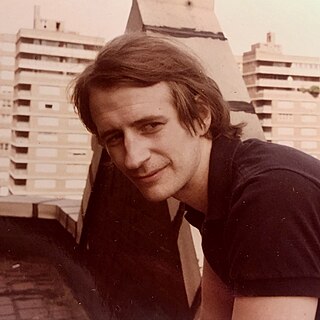
Ed Bowes is a filmmaker, writer, and director who pioneered the use of video as cinema. The first person to make a feature-length film in video, he used poets, musicians, artists, video- and filmmakers as performers in films such as Romance (1975) and Better, Stronger (1978–79). As a result of the notice given to his camera work, Bowes began his long career as a cinematographer for filmmakers and video artists including Kathryn Bigelow, Lizzie Borden, Vito Acconci, and Robert Longo, among others. In the 1970s, he was instrumental in creating early exhibitions of video art at MoMA, The Kitchen, and other Downtown New York venues. He taught advanced filmmaking for more than three decades at the School of Visual Arts, where he influenced several generations of contemporary filmmakers. His work is in the collection of The Museum of Modern Art, New York, and Moderna Museet in Stockholm, Sweden. It is also represented in The Kitchen Archive at The Getty Research Institute and the Long Beach Museum of Art Video Archive.
